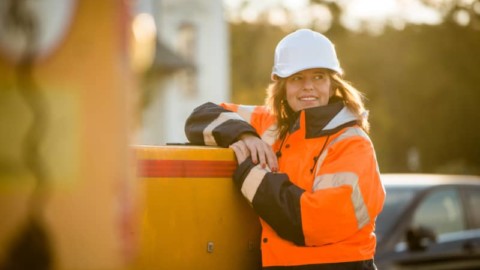Extreme weather conditions across New South Wales are testing the limits of the state’s infrastructure, closing airports, roads and bridges, and bringing dams to capacity.
The Bureau of Meteorology (BoM) issued major weather warnings as two major systems collided, with weather conditions rapidly worsening over the weekend of 20-21 March.
Dozens of areas have been classified as natural disasters zones, with evacuation orders being issued across the state.
The Australian Defence Force has been deployed to join the emergency rescue efforts with the BoM warning that the crisis is “far from over”.
Moree braces for more floods
At the time of publication, the Dr Geoffrey Hunter Bridge is open for access for Emergency Response Vehicles only due to rising floodwaters and this will be monitored.
Moree residents have been urged to only travel if absolutely necessary.
The Moree Council warned that a number of services had been affected by the floods, including the closure of Moree Cemetery and all village cemeteries, Moree Waste Management Facility, and all village landfills.
Dozens of roads are closed across the Moree Plains. For a full list of road closures, click here.
Councils begin clean up
Whilst there are still communities isolated, dozens of roads underwater, and people impacted by the floods, Kempsey Shire Council has begun the first steps to recovery.
It may take weeks and months until the Kempsey Shire has completely recovered from the damage from these floods.
The Kempsey Shire Council said it is working hard to allow individuals and businesses to get back to normal.
There are a large number of tasks that the Council’s work teams are carrying out, such as clearing streets, assessing the damage to bridges and roads, clearing landslips, and repairing potholes.
Eurobodalla Council’s crews have also been assessing the damage and making repairs in their area.
There was still plenty of water around and several roads remained closed.
As waters recede from local flooded bridges, they’ll be assessed, cleaned, repaired and opened as a priority.
Flood damage to council infrastructure valued at more than $240,000 triggers eligibility to apply for a NSW Government Natural Disaster Declaration, which provides funding for repairs to flood-damaged assets.
Four were declared in 2020 for floods in February, July, August, and October, with December’s application pending.
The Eurobodalla Council anticipates Natural Disaster Declaration eligibility for the March 2021 floods.
NSW Maritime warns of debris risks
Fast moving and potentially deadly debris is flowing through large areas of the NSW river systems, prompting a call for all non-essential boating to cease until the current severe weather event passes.
NSW Maritime Executive Director, Andrew Mogg, said while it should be obvious that boaters should not consider launching in flooded rivers, it was crucial people understand the hidden dangers associated with boating in other parts of the river system.
“What we are seeing on the NSW North Coast is a one in 100 year flood event, while we are also seeing issues all through the NSW waterway system, even waterways hundreds of kilometres from flood zones,” Mr Mogg said.
“People need to understand just because it may not be raining at your location – the flow of flood waters across the state is severe and has impacts downstream some hundreds of kilometres away.
“The impacts to and associated risks with flooded waterways such as Hawkesbury or Macleay rivers may seem obvious, as the surrounding towns are literally under water and in some cases entire houses are floating past.
“Everyone is strongly advised to monitor weather and flood warnings and adhere to any guidance provided by SES and emergency services. Now is not the time to go boating.
“Due to the centralised nature of the river system, this flood event is impacting all of our waterways as water flows downstream.
“Just like we know that the majority of an iceberg lies below the surface, debris and hazards in a waterway are often submerged or semi-submerged.
“We are receiving reports of trees, shipping containers, vessels and large remnants of infrastructure such as buildings and jetties.”
Mr Mogg also reminded boat skippers there is a high probability hundreds of navigation markers are off-station and will need to be re-installed. The clean-up work will start once the hazardous conditions have eased.
“Our Boating Safety Officers will conduct audits of all of the state’s waterways when it is safe to do so and we will be getting on with the job or reinstating these markers. But until then, if you’re on the water you are effectively boating blind.”
Newcastle Airport runway re-opens
Newcastle Airport was forced to close the airfield until midday Wednesday 24 March, due to the major flooding and extreme weather conditions.
Newcastle Airport continued regular assessments of the airfield, until operations were able to recommence.
Those with flights booked in the coming days are being asked to confirm their flight status with their airline.
Warragamba Dam levels fall after spill
The volume of water spilling from Warragamba dam has fallen further to 200 gigalitres per day (GL/day) down from a rate of 240GL/day on Tuesday 23 March, after peaking at 500GL/day on Sunday.
With rain abating across the catchment overnight inflows are down to a rate of 150GL/day and expected to continue to fall in the absence of further catchment rainfall in the short term.
Other Sydney supply dams are continuing to receive inflows, with Nepean, Cataract, Cordeaux and Avon dams all spilling.
On current forecasts, it is likely Warragamba’s rate of spill will drop significantly but could continue at low levels for some time, depending on weather forecasts.
WaterNSW is maintaining a dedicated 24-hour incident management team that is working closely with the Bureau and the NSW State Emergency Service to monitor weather and dam inflows.
WaterNSW will continue to work closely with Sydney Water and NSW Health throughout the rain event, to watch for potential water quality impacts on untreated supply.
Modelling indicates that approximately 1500GL of water will flow into the dam in the seven days since the extreme weather event commenced, a figure that represents 75 per cent of the dam’s storage capacity of 2000GL.
Rainfall a positive sign for Canberra’s dams
Canberra’s dams reached a milestone 100 per cent total storage capacity on 22 March for only the second time since completion of the enlargement of the Cotter Dam in 2013.
Following extreme temperatures in early 2020, and two of Australia’s driest years on record, water storage levels across the ACT dropped below 45 per cent (123.6GL) in February 2020.
A wetter than average 2020 and the commencement of a La Nina event has meant that storages have recovered significantly with all four of the ACT’s dams now full and holding 277.83GL.
Icon Water Managing Director, Ray Hezkial, said, “We’ve been pleased to see a considerable increase in rainfall over the last twelve months, compared to recent years, and this has meant Canberra’s water storages are in a much healthier place than this time last year.
“While the current rainfall has filled up storage levels, Icon Water are always planning for future droughts and are considering all options to protect Canberra’s long-term water security.
“While it may not seem the case at present, Australia is the second driest continent on Earth, and we cannot rule out significant drought again in our future,” Mr Hezkiel said.
“We’re considering a number of viable options to ensure Canberrans have a secure water supply for now and the future and of course, we’ll be engaging with the community to hear their thoughts in this space as well.”
Queenslanders urged to stay safe
Queenslanders are being urged to stay safe during the current extreme weather conditions affecting the state.
There has been very intense rainfall activity affecting various parts of the state in the 24 hours to 22 March, particularly the south-east region of Queensland.
Emergency Services crews have been called to numerous incidents, including a number where people have been caught in floodwaters in their vehicles.
Minister for Fire and Emergency Services, Mark Ryan, urged people to heed the warnings from agencies including the Bureau of Meteorology.
“We are in a situation at the moment where very heavy downfalls of rain are occurring in very short periods of time, which is leading to dangerous situations arising very suddenly,” Mr Ryan said.
“It is imperative that people stay abreast of the weather warnings and also that everyone take a very cautious approach when driving on the roads.”

















